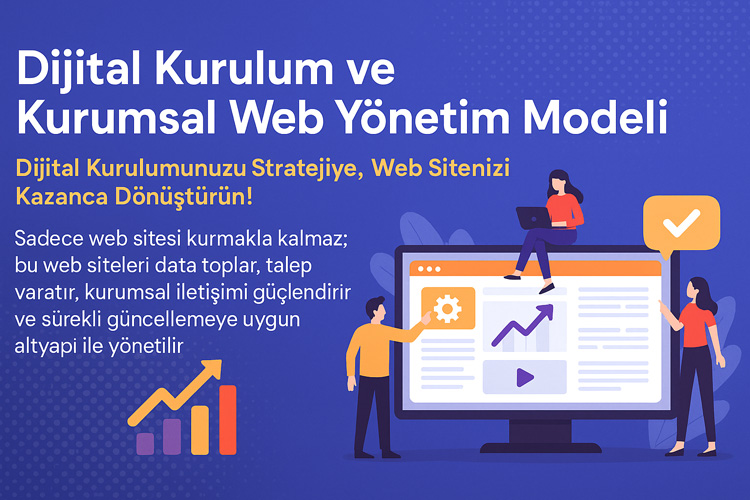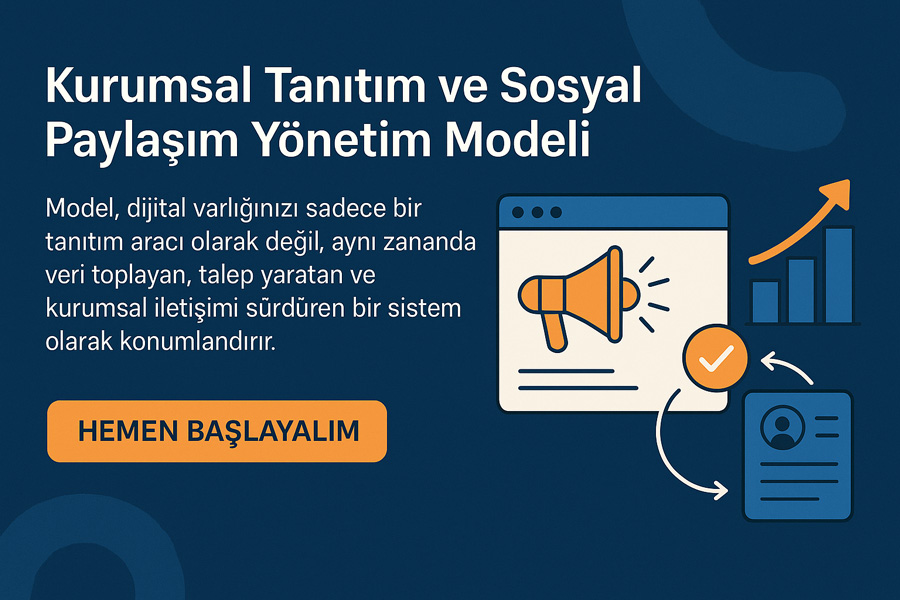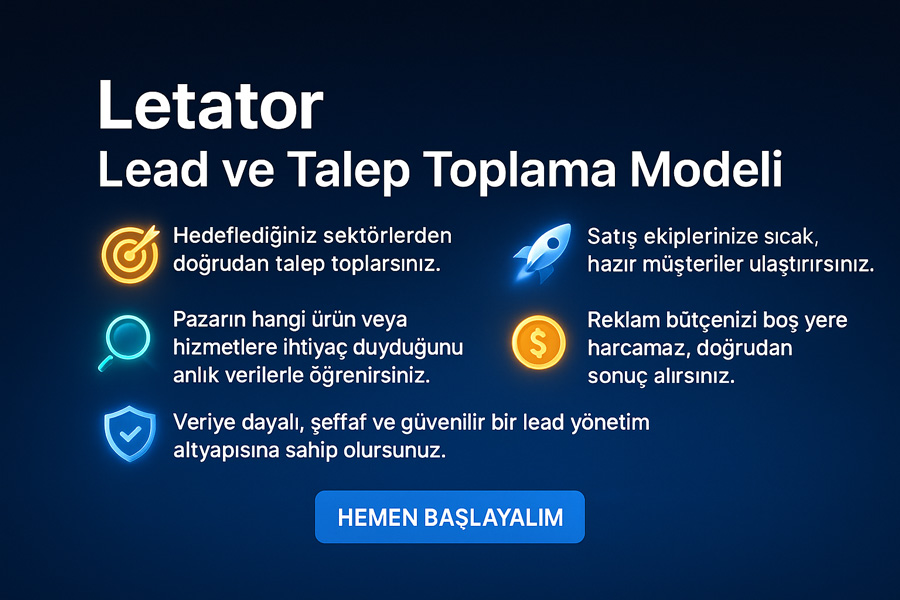SWOT Analysis is an effective method for evaluating the current status of your business and determining your future strategies. SWOT consists of the first letters of the words Strengths, Weaknesses, Opportunities and Threats. In Turkish, this analysis method is known as GZFT. By determining the strengths and weaknesses of your business, opportunities and threats, you can provide competitive advantage and achieve long-term success. 🏆
Strengths and weaknesses are elements within your business. Strengths are features that provide competitive advantage and make your business stand out. For example, you may have strong brand awareness, customer loyalty, or a unique product. Weaknesses are areas where your business needs to improve. This could be insufficient financial resources, limited marketing capabilities, or a lack of technology infrastructure. Identifying your strengths and maximizing them, while identifying your weaknesses and developing development strategies will allow you to better manage the internal dynamics of your business. 🔍
Opportunities and threats are elements originating from the external environment of your business. Opportunities are positive factors coming from outside for the growth and development of your business. Entering a new market segment, weakening of competitors, or technological innovations can be counted among the opportunities. Threats are elements originating from the external environment of your business that can negatively affect its performance. Economic recession, increasing competition, or changing consumer behavior are among the threats. By correctly analyzing these external elements, you can evaluate the opportunities and take precautions against threats. 🌐

SWOT analysis helps you objectively evaluate the current status of your business. This analysis takes into account the internal and external factors of your business, allowing you to maximize your strengths and opportunities, and minimize your weaknesses and threats. Rapidly changing market dynamics and digital transformation are among the factors that further increase the importance of SWOT analysis in 2024. Therefore, it is of great importance to follow innovative approaches and current trends when performing SWOT analysis. 📈
As a result, SWOT analysis is an indispensable tool in the strategic planning of your business. By determining your strengths and weaknesses and analyzing your opportunities and threats, you can gain competitive advantage and ensure your long-term success. To accurately assess the current state and future potential of your business, do not forget to conduct SWOT analysis regularly. 💼

İçindekiler
ToggleSWOT Analysis: Identify Your Strengths and Weaknesses
SWOT Analysis is an indispensable tool for determining the strengths and weaknesses of your business. SWOT consists of the first letters of the words Strengths, Weaknesses, Opportunities and Threats. In Turkish, this analysis method is known as GZFT. By determining your strengths and weaknesses, you can increase the performance of your business and make your strategic planning more effectively. 🔍
Adapte Dijital’in 10 yıllık deneyimiyle geliştirilen bu model, kurumsal web sitenizi sadece tasarlamakla kalmaz;
onu data toplayan, talep yaratan, kurumsal iletişim sağlayan bir dijital yönetim altyapısına dönüştürür.
Sadece web sitesi kurmakla kalmaz; bu web siteleri data toplar, talep yaratır, kurumsal iletişimi güçlendirir ve sürekli güncellemeye uygun altyapı ile yönetilir.
Strengths
The elements that provide your business with a competitive advantage and make you stand out from your competitors. These elements are considered as internal elements within your business. For example, factors such as strong brand awareness, high customer loyalty, unique products or services and strong financial position can be counted among the strengths. To determine your strengths, you can ask the following questions:
- What are the most appreciated features of your business?
- What resources do you have that your competitors don’t?
- Why do your customers choose you?
The answers to these questions will clearly reveal the strengths of your business. Maximizing these aspects will increase your competitive advantage. 💪
Weaknesses
These are the elements that your business needs to improve and that can negatively affect your performance. Weaknesses are also considered as internal elements within your business. For example, insufficient financial resources, limited marketing capabilities, deficient technology infrastructure or insufficient staff are among the weaknesses. You can ask the following questions to identify your weaknesses:
- In which areas do you have difficulty competing?
- What are the issues your customers complain about?
- Which of your resources are missing or inadequate?
The answers to these questions will clearly reveal the weaknesses of your business. Identifying and improving these aspects will increase the overall performance of your business. 🛠️
SWOT Analysis takes into account the internal and external factors of your business, allowing you to maximize your strengths and opportunities, while minimizing your weaknesses and threats. Determining your strengths and weaknesses guides you in your strategic planning. Rapidly changing market dynamics and digital transformation are among the factors that further increase the importance of SWOT analysis in 2024. Therefore, it is of great importance to follow innovative approaches and current trends when performing SWOT analysis. 📈
As a result, determining your strengths and weaknesses with SWOT analysis is an important step to take to increase the success of your business. While determining and maximizing your strengths, identifying your weaknesses and developing development strategies allows you to better manage the internal dynamics of your business. SWOT analysis helps you objectively evaluate the current status of your business and supports your strategic planning for long-term success. 🌟
Remember, SWOT analysis should be done regularly and the data obtained should be used to achieve your business’s strategic goals, and your strengths and weaknesses should be constantly reviewed. In this way, you can maintain your business’s competitive advantage and achieve sustainable growth. 🌐
Opportunities and Threats: Analyze Your Business’s External Environment
Opportunities and threats are elements originating from your business’s external environment and are important factors affecting your business’s future success. Opportunities and threats, which are an important part of SWOT Analysis, allow you to better understand the dynamics around your business. These elements are considered as external elements, not inside your business. By analyzing your business’s external environment, you can evaluate opportunities and develop strategies against threats. 🌐
Adapte Dijital’in 10 yıllık deneyimiyle geliştirilen bu model, kurumsal web sitenizi kurumunuzu/markanızı anlatan, tanıtan, güven yaratan, talep oluşturan bir dijital yönetim platformuna dönüştürür.
Adapte Dijital, bu modelde bir konumlandırma ajansı olarak çalışır. Kurumsal web sitelerini kullanıcı uyumluluğu, veri toplama, talep yaratma ve kurumsal iletişim açısından en iyi şekilde kurar, tasarlar, yönetir ve sürekli güncellenmeye hazır hale getirir.
Opportunities are positive external factors that help your business grow and develop. These elements can open up new markets, gain new customers, and provide a competitive advantage. To identify opportunities, you can ask these questions:
- Which market segments have growth potential?
- How can technological innovations benefit your business?
- What external factors could positively impact your business’s performance?
For example, entering a new market segment, weakening of competitors, technological innovations and legislative changes can be counted among the opportunities. Evaluating these opportunities will increase your business’s growth and development potential. 🚀
Threats are elements from your business’s external environment that can negatively affect its performance. These elements include the risks and challenges your business faces. You can ask the following questions to identify threats:
- What economic factors can negatively affect your business?
- What are your competitors’ strategies?
- How can changes in consumer behavior affect your business?
For example, economic recession, increased competition, changing consumer behavior and new legislation are among the threats. Developing strategies against these threats minimizes your business’s risks and maintains its performance. ⚠️
Opportunities and threats allow you to understand the dynamics in your business’s external environment. By analyzing these elements, you can make your business’s strategic planning more effectively. In 2024, rapidly changing market dynamics and digital transformation may increase opportunities but also create new threats. Therefore, it is of great importance to follow current trends and innovations when performing a SWOT analysis. 📈
As a result, identifying opportunities and threats with SWOT analysis allows you to understand the dynamics in your business’s external environment and make your strategic planning more effectively. You can increase your growth and development potential by evaluating opportunities, and minimize your business’s risks by developing strategies against threats. 🌟
Remember, opportunities and threats should be analyzed regularly and the data obtained should be constantly reviewed by using them to achieve your business’s strategic goals. In this way, you can maintain your business’s competitive advantage and achieve sustainable growth. 💼
By correctly analyzing these important components of SWOT Analysis, you can ensure the future success of your business and adapt to dynamic market conditions. 🌐
What is SWOT Analysis? You can read our article titled How to Use? and get detailed information.
Why is SWOT Analysis Important and How Does It Contribute to Your Business?
SWOT Analysis is a tool used in the strategic planning process of businesses and is used to determine the strengths and weaknesses, opportunities and threats of the business. This analysis method helps you objectively evaluate the current situation of your business and guides you in determining your future strategies. So, why is SWOT Analysis so important and how does it contribute to your business? 🌟
1. Strategic Planning and Goal Setting:
SWOT Analysis makes your strategic planning process more effective by determining your business’s strengths, weaknesses, opportunities and threats. It allows you to maximize your strengths and opportunities while minimizing your weaknesses and threats. In this way, you can determine your business’s strategic goals more clearly and plan the steps needed to achieve these goals. For example, you can gain a competitive advantage by developing marketing strategies that emphasize your strengths. 📈
2. Gaining Competitive Advantage:
SWOT Analysis helps you gain an advantage over your business’s competitors. By identifying your strengths, you can stand out from your competitors in these areas. In addition, by evaluating opportunities in the market, you can enter new markets and expand your customer base. For example, you can increase your market share by developing strategies that emphasize your strengths in areas where your competitors are weak. 💪
3. Risk Management and Crisis Planning:
SWOT Analysis allows you to identify potential threats your business faces and develop strategies against these threats. Identifying threats allows you to minimize your business’s risks and produce fast and effective solutions in crisis situations. For example, you can develop strategies to control costs during economic recession periods. ⚠️
4. Effective Use of Resources:
SWOT Analysis allows you to use your business’s resources more effectively. By identifying your strengths and opportunities, you can focus on these areas and use your resources more efficiently. For example, if you have strong brand awareness, you can strengthen your marketing campaigns by using this advantage. Similarly, by identifying your weaknesses, you can make the necessary improvements in these areas and manage your resources more effectively. 🔍
5. Innovation and Continuous Development:
SWOT Analysis helps your business have an innovative and constantly developing structure. By identifying opportunities, you can develop new products and services, respond to customer demands faster and adapt to market trends. For example, by following technological innovations, you can accelerate your digital transformation processes and improve customer experience. 🚀
As a result, SWOT Analysis is an important tool for evaluating the current status of your business and determining future strategies. Strategic planning makes significant contributions to your business in areas such as providing competitive advantage, risk management, effective use of resources and innovation. Therefore, SWOT Analysis should be done regularly and the data obtained should be used to achieve your business’s strategic goals. 🌐
Remember, SWOT Analysis identifies the strengths, weaknesses, opportunities and threats of your business, making your strategic planning more effective and helping you achieve long-term success. 💼
You can get detailed information by watching our founder Gürbüz Özdem’s Digital Consulting and Digitalization video.
Gain Competitive Advantage by Evaluating Opportunities
To achieve success in the business world, you need to understand not only your current situation, but also your future It is also necessary to evaluate opportunities. Opportunities, which are an important part of SWOT Analysis, are elements that increase the growth and development potential of your business. By evaluating these opportunities correctly, you can gain a competitive advantage and increase your market share. So, how can you evaluate opportunities and gain a competitive advantage? 🌟
1. Market Research and Trend Analysis:
The first step to evaluate opportunities is to conduct market research. By analyzing market dynamics, customer needs and industry trends, you can identify opportunities that will increase the growth potential of your business. For example, if you are operating in a sector that is undergoing digital transformation, you can gain a competitive advantage by integrating new technologies and digital solutions into your business. 📊
2. Entering New Market Segments:
Another way to evaluate opportunities is to enter new market segments. You can expand your market share by offering your business’s products or services to different customer groups. For example, you can gain new customers by marketing your existing products to different demographic groups or geographic regions. This will increase your business’s growth potential and provide a competitive advantage. 🌍
3. Innovation and Product Development:
Focusing on innovation and product development is also important to evaluate opportunities. By developing new and innovative products, you can meet customer needs and stand out from your competitors. For example, you can improve your existing products based on customer feedback or meet the needs of the market by developing completely new products. This will increase customer satisfaction and help you build a loyal customer base. 🚀
4. Strategic Partnerships and Collaborations:
Another way to evaluate opportunities is to make strategic partnerships and collaborations. You can gain a competitive advantage by establishing collaborations that complement the strengths of your business and enable you to achieve common goals. For example, by collaborating with a technology company, you can make your products more innovative and increase your market share. 🤝
5. Digital Transformation and Online Marketing:
Today, digital transformation is an important opportunity for businesses. By developing digital marketing strategies, you can reach a wider customer base on online platforms and increase your brand awareness. For example, by using digital marketing tools such as social media, search engine optimization (SEO), and digital advertising, you can strengthen your business’s online presence and gain a competitive advantage. 📲
As a result, gaining a competitive advantage by evaluating opportunities increases your business’s growth and development potential. You can strengthen your business’s competitive advantage by conducting market research and trend analysis, entering new market segments, focusing on innovation and product development, establishing strategic partnerships and collaborations, and implementing digital transformation strategies. 🌟
Remember, evaluating opportunities ensures the long-term success and sustainable growth of your business. Therefore, you should analyze opportunities regularly and include them in your strategic planning. 💼
With SWOT Analysis, you can increase the competitiveness of your business and take your place among the leaders of the market by correctly evaluating the opportunities you have identified. 🌐
How to Do SWOT Analysis: Using TOWS Matrix
SWOT Analysis is an effective method used to determine the strengths and weaknesses, opportunities and threats of your business. However, you can use the TOWS Matrix method to take this analysis to a more strategic level. The TOWS Matrix brings together the four components of the SWOT Analysis, helping you make strategic decisions and increase your business’s performance. So, how is the TOWS Matrix used and how does it contribute to your business? 🌟
1. What is the TOWS Matrix?
The TOWS Matrix is a tool that determines the relationships between the four components of the SWOT Analysis (Strengths, Weaknesses, Opportunities, Threats) and offers strategic options. This matrix analyzes the internal and external environment of your business, making your strategic planning more effective. For example, it helps you determine how you can gain competitive advantage by combining your strengths with opportunities or how you can protect your weaknesses against threats. 📊
2. TOWS Matrix Components:
TOWS Matrix consists of four main components:
- SO (Strengths-Opportunities) Strategies: Use your strengths to evaluate opportunities.
- WO (Weaknesses-Opportunities) Strategies: Use your weaknesses to evaluate opportunities.
- ST (Strengths-Threats) Strategies: Protect yourself against threats by using your strengths.
- WT (Weaknesses-Threats) Strategies: Reduce threats by minimizing your weaknesses.
These components provide concrete steps to use in your business’s strategic planning. 📈
3. TOWS Matrix Usage:
You can follow these steps to make strategic planning using TOWS Matrix:
- Strengths and Opportunities (SO Strategies): Identify your strengths and think about how you can combine these with opportunities. For example, if you have strong brand awareness, you can use this advantage to enter new market segments.
- Weaknesses and Opportunities (WO Strategies): Identify your weaknesses and think about how you can improve these aspects and take advantage of opportunities. For example, if your marketing skills are weak, you can evaluate new market opportunities by getting training in this area.
- Strengths and Threats (ST Strategies): Identify your strengths and think about how you can use these aspects against threats. For example, if you have a strong financial structure, you can stand out from your competitors by using this advantage during economic recession periods.
- Weaknesses and Threats (WT Strategies): Identify your weaknesses and think about how you can minimize these aspects and protect against threats. For example, if your technology infrastructure is weak, you can increase your competitive power by investing in this area.
4. Contributions of TOWS Matrix to Your Business:
TOWS Matrix makes your business’s strategic planning more effective and increases its performance. With this matrix:
- You can clarify your strategic goals and better understand your strengths and weaknesses.
- You can gain a competitive advantage and better evaluate opportunities in the market.
- You can be prepared for threats by minimizing risks.
- You can increase your business’s growth potential by using your resources more efficiently. 💪
Ultimately, using the TOWS Matrix will help you take your SWOT Analysis to a strategic level and increase the success of your business. This tool will help you better understand your business’s strengths and weaknesses, opportunities and threats, and establish strategic relationships between these elements. 🌐
Remember, using the TOWS Matrix regularly will help your business achieve its strategic goals and achieve sustainable growth. 💼



















































